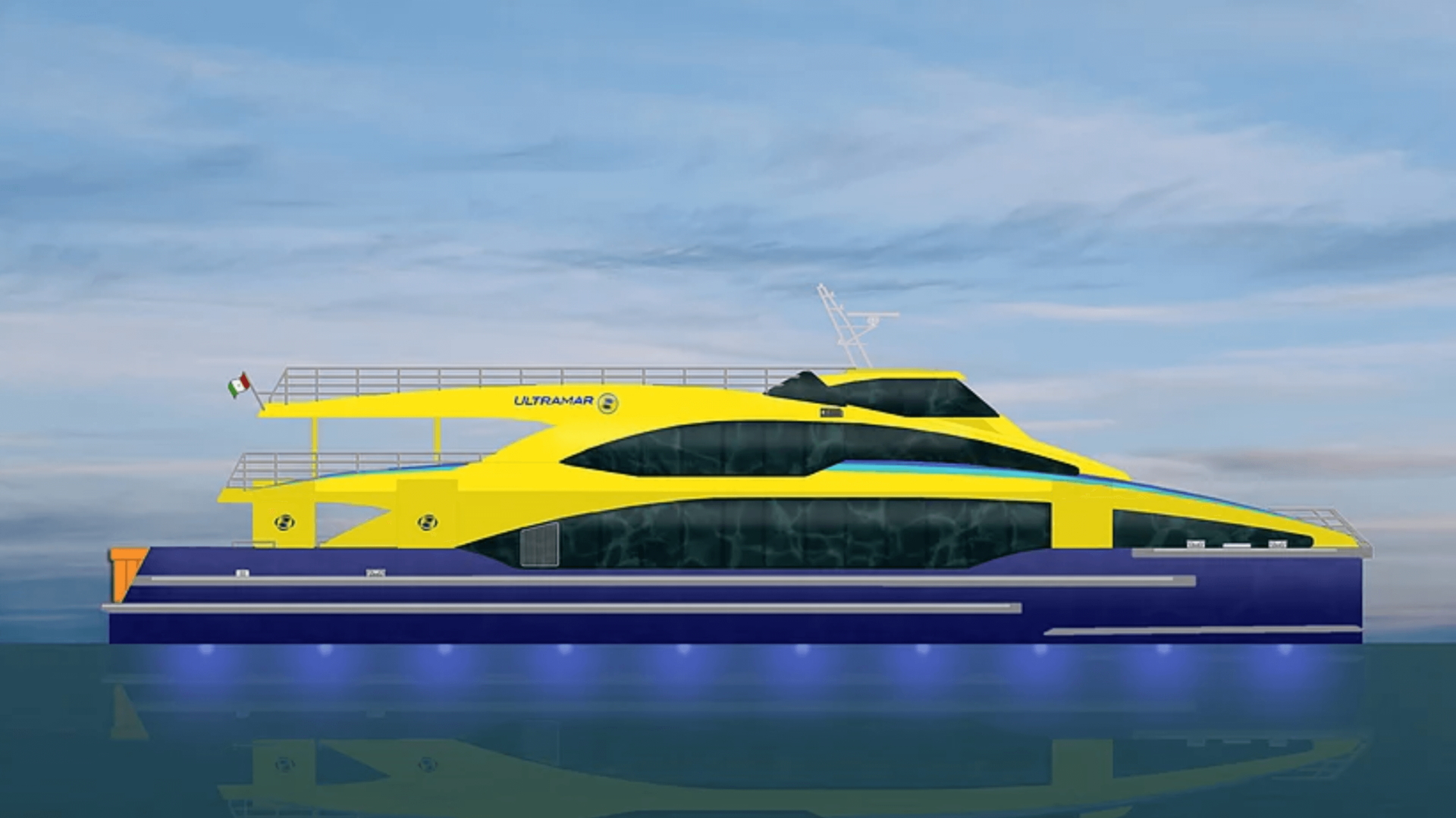CJR’s international order book continues to grow with an agreement for complete propulsion and sterngear packages for two new passenger ferries.
It is the first time Mexico’s largest ferry operator, Ultramar, has built high-speed ferries outside of the United States, and the project is a true UK success story, with Incat Crowther managing the design and Wight Shipyard Co responsible for the build.
The two identical 37 metre ferries will feature a modern look and each will provide accommodation for 459 passengers over three decks, with passengers able to board from the main deck forward and aft. Two external staircases located at the aft will lead to a roof deck where passengers will be able to enjoy commanding sea views.
In the hulls, the engine rooms have been designed to provide crews with maximum access, with all machinery arranged in the same space. The engine rooms are designed so that the engines can be removed without slipping the vessel or damaging the superstructure or hull.
Vessel performance and high levels of efficiency were both key considerations for the future owners, with a required top speed of 24 knots at 75% maximum continuous rating, delivered via two MTU 12V4000 M63 marine diesel engines and a fully optimised propulsion package from CJR, boasting fully CFD-optimised propellers with a diameter in excess of 1.2 metres.
The ferries will also be amongst the first commercial passenger vessels to feature CJR’s unique twisted rudders, which have been developed specifically to reduce rudder resistance, using CFD analysis to understand the lift, drag and torque required. The exclusive rudder design actively minimises premature cavitation and related vibration through a twisted profile that is perfectly aligned with the ferries’ propeller flow angles, along the entire span – reducing the suction pressure peak that can form on or near the leading edge of the rudder.
“When it comes to commercial vessels, and ferries in particular, efficiency is critical to their success – and even their viability. Almost everything we do is focused on maximising the performance efficiency and longevity of the propulsion package and the rudder is one area where notable gains can be made. By taking a scientific approach to analysing the hull form, the propeller and rudder angle and positioning, the proposed cruising speed and a host of other criteria, we’re able to create a product that is fully optimised for the vessel in question, and which we expect to outlast any comparable product,” commented CJR’s marketing manager, Alex Stevens.
The particulars:
- Builder: Wight Shipyard Co
- Designer: Incat Crowther
- Length overall: 37.00 m
- Length waterline: 36.70 m
- Beam: 8.75 m
- Passengers: 459
- Speed: 24 knots @75% MCR
- Main engines: Two MTU 12V4000 M63 marine diesel engines, each 1500 kW @1800 rpm
- Emissions: IMO Tier II
- Gearboxes: Two ZF 5055, rated 2.731:1
- Propulsion: Two 1275mm fixed pitch CJR propellers, 4.75” shafts and related sterngear
